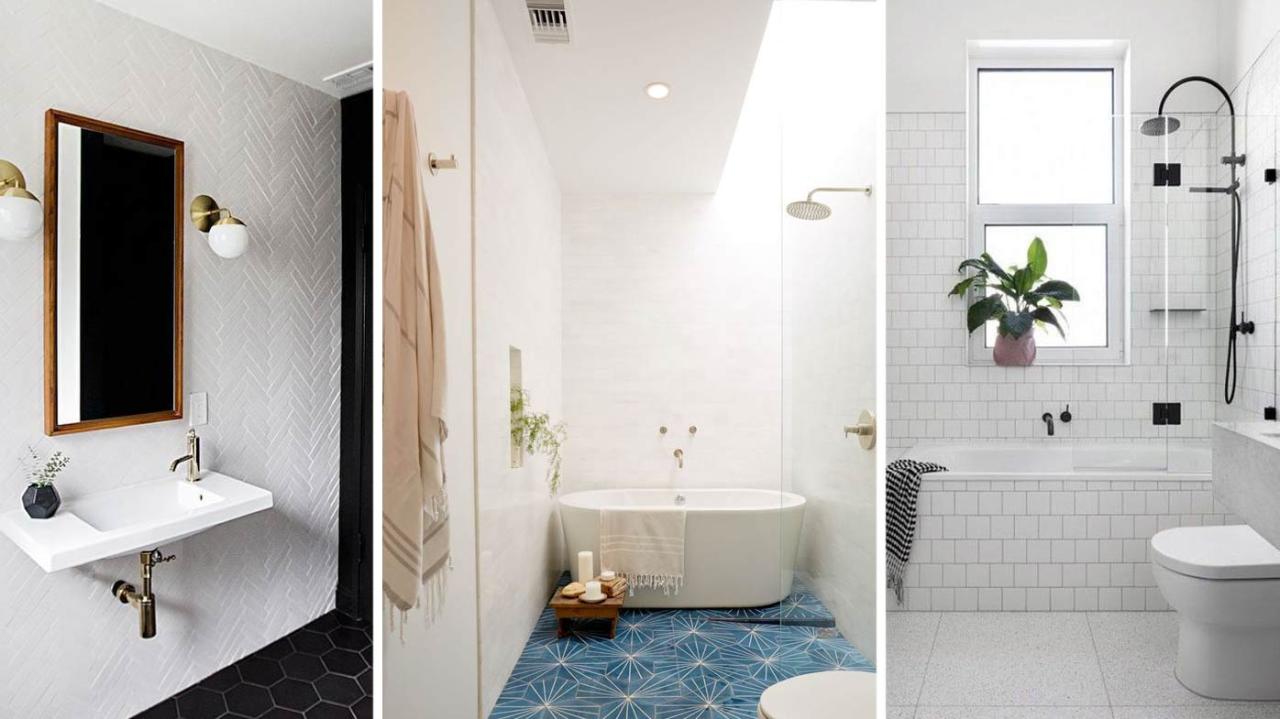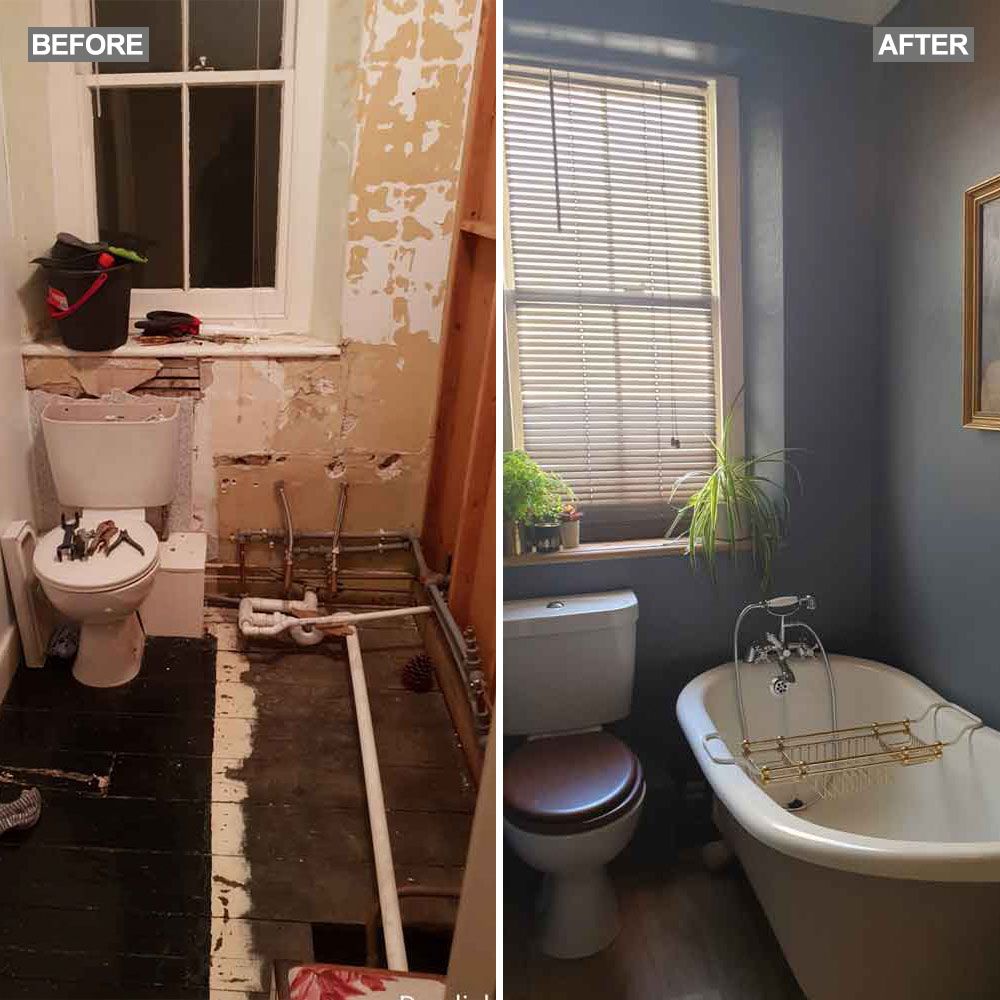Cheap Bathroom Renovation Ideas That Add Value: A Comprehensive Guide
Embark on a journey to discover cost-effective yet impactful bathroom renovation ideas that elevate the value of your space. From budget-friendly materials to creative DIY projects, this guide is your key to transforming your bathroom without breaking the bank.
Explore the innovative ways in which you can revamp your bathroom and add value to your home effortlessly.
Budget-Friendly Materials
When renovating a bathroom on a tight budget, choosing cost-effective materials is crucial. By selecting affordable yet high-quality options, you can still achieve a stylish and functional space without breaking the bank.
Vinyl Flooring
Vinyl flooring is a budget-friendly option that comes in a variety of styles and designs. It is easy to install, water-resistant, and durable, making it an ideal choice for bathrooms. Additionally, vinyl flooring is relatively low-maintenance, saving you time and money on upkeep.
Laminate Countertops
Laminate countertops are a wallet-friendly alternative to pricier materials like granite or marble. They are available in a wide range of colors and patterns, allowing you to achieve the look you want at a fraction of the cost. Laminate countertops are also easy to clean and maintain, making them a practical choice for bathrooms.
Fiberglass Shower/Tub Combo
For those looking to update their shower or bathtub without spending a fortune, a fiberglass shower/tub combo is a budget-friendly option. Fiberglass is lightweight, easy to install, and resistant to mold and mildew. With proper care, a fiberglass shower/tub combo can last for years, adding value to your bathroom without the hefty price tag.
DIY Renovation Projects

Embarking on DIY renovation projects can be a cost-effective way to add value to your bathroom without breaking the bank. Not only can it save you money, but it also allows you to customize the space according to your preferences.
Painting Cabinets and Fixtures
One of the easiest and most budget-friendly DIY projects is painting cabinets and fixtures. A fresh coat of paint can instantly transform the look of your bathroom, giving it a new and updated feel. Make sure to choose a high-quality paint that is specifically designed for cabinets and fixtures to ensure durability.
Installing a New Vanity
Replacing an old vanity with a new one can make a significant impact on the overall look of your bathroom. Opt for a budget-friendly option that fits your space and style. With a few tools and some basic plumbing knowledge, you can easily install a new vanity yourself and save on installation costs.
Updating Hardware and Accessories
Swapping out old hardware and accessories, such as drawer pulls, towel bars, and faucets, can give your bathroom a modern and cohesive look. Look for affordable options that match the style of your bathroom and replace them yourself to save on labor costs.
Adding a Tile Backsplash
Adding a tile backsplash behind your sink or vanity can add a touch of elegance to your bathroom. Choose budget-friendly tiles and install them yourself using adhesive or grout. A tile backsplash is a simple DIY project that can make a big impact on the overall aesthetic of your bathroom.
Creative Storage Solutions

When renovating a bathroom on a budget, maximizing storage space is key to enhancing functionality and adding value to the space. Creative storage solutions can help keep the bathroom organized and clutter-free, making it more appealing to potential buyers or increasing your own enjoyment of the space.
Over-the-Toilet Shelving
One innovative storage idea that is inexpensive and space-saving is installing over-the-toilet shelving. This type of shelving utilizes vertical space that is often underutilized in bathrooms, providing a place to store towels, toiletries, and other essentials without taking up valuable floor space.
Floating Shelves
Floating shelves are another budget-friendly storage solution that can add a modern touch to your bathroom. These shelves can be easily installed on any empty wall space and can be used to display decorative items or store everyday necessities. They are a stylish and practical way to maximize storage in a small bathroom.
Basket Storage
Using baskets for storage is a versatile and affordable option that adds texture and visual interest to the bathroom. Baskets can be placed on shelves, under sink vanities, or even hung on the wall to hold towels, toiletries, and other items.
They are an easy way to keep the space organized while adding a touch of charm.
Lighting and Fixtures
When it comes to renovating a bathroom on a budget, updating the lighting and fixtures can make a significant impact without breaking the bank. By choosing affordable options and strategically placing them, you can enhance the ambiance and overall look of the space.
Affordable Lighting Options
Updating the lighting in your bathroom doesn’t have to be expensive. Consider replacing old fixtures with energy-efficient LED bulbs or installing budget-friendly sconces or pendant lights. These options can instantly brighten up the space and create a more inviting atmosphere without costing a fortune.
Transforming the Look with Updated Fixtures
Swapping out outdated fixtures like faucets, showerheads, and cabinet hardware can completely transform the look of your bathroom. Opt for modern, sleek designs that are both stylish and affordable. By giving your fixtures a fresh update, you can achieve a more polished and cohesive aesthetic in the room.
The Role of Lighting and Fixtures in Adding Value
Proper lighting and stylish fixtures play a crucial role in increasing the value of a bathroom. Potential buyers are often drawn to well-lit spaces with updated fixtures, as they indicate a sense of modernity and functionality. By investing in affordable lighting options and fixtures, you can not only enjoy a more aesthetically pleasing bathroom but also potentially raise the value of your home.
Paint and Color Choices
When it comes to bathroom renovations on a budget, choosing the right paint colors can make a significant impact without breaking the bank.Painting is a cost-effective way to refresh the look of a bathroom, and selecting trendy yet affordable colors can add value to your space.
Impact of Color Schemes
- Neutral colors like white, beige, or light gray can make a small bathroom appear larger and more spacious.
- Bold accent colors such as navy blue, emerald green, or blush pink can add a touch of personality and sophistication to the space.
- Consider the overall style and theme of your bathroom when choosing a color scheme to ensure cohesiveness.
Final Conclusion

In conclusion, implementing these cheap bathroom renovation ideas can not only enhance the aesthetic appeal of your space but also increase its overall value. With a little creativity and resourcefulness, you can achieve a stylish and functional bathroom that adds value to your home.
FAQ Insights
What are some budget-friendly materials for bathroom renovations?
Some cost-effective materials include laminate flooring, acrylic shower surrounds, and porcelain tile.
How can DIY renovation projects add value to a bathroom?
DIY projects such as installing a new vanity or updating fixtures can add a personal touch and increase the functionality of the space.
What are some creative storage solutions that are inexpensive?
Utilizing wall-mounted shelves, baskets, and over-the-toilet storage units are affordable storage solutions that maximize space.
How can updating lighting and fixtures impact the value of a bathroom?
By choosing affordable yet stylish lighting options and modern fixtures, you can enhance the ambiance and overall appeal of the bathroom, thus increasing its value.
What role do paint and color choices play in cheap bathroom renovations?
Choosing cost-effective paint colors and trendy color schemes can instantly refresh the bathroom’s look and feel, adding value to the space without a hefty price tag.